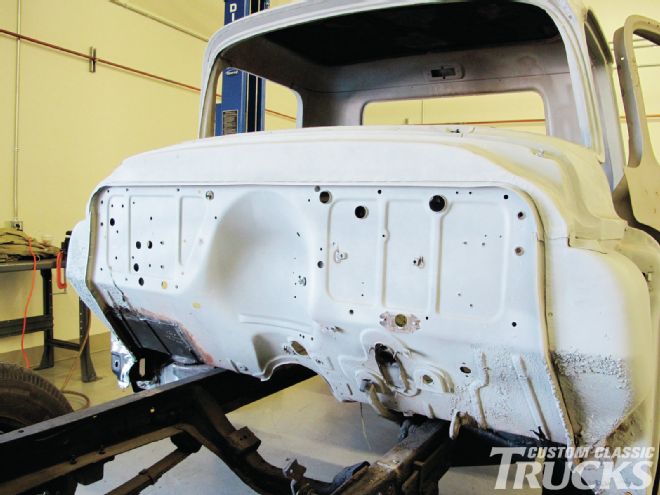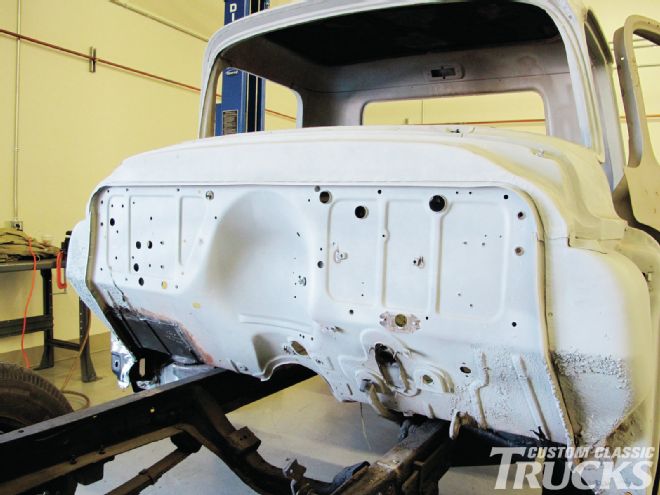
After last month’s inspection of his newest project and following its return from the sandblaster, our tech center main man Jason Scudellari tore into the sheetmetal repairs on our project ’56 Chevy with vigor. Replacing the cab corners, rockers, and part of the driver’s side door pillar, it soon became painfully obvious that one, if not both, of the cab’s doors were smoked. As Jason began searching for replacement items, it became even more painfully obvious that finding decent stock replacements wasn’t going to be easy, as it seems that this is a weak area of sorts for these trucks.
 A quick look at the stock firewall shows why someone would want to clean it up a little bit. That’s a lot of holes!
A quick look at the stock firewall shows why someone would want to clean it up a little bit. That’s a lot of holes!
Not wanting to have the project sit idle while a good set of doors was sorted out, we decided to sit down and to see if we could come up with a few things that could be accomplished on the truck in its current state. We decided that it was as good a time as any to tackle shaving the firewall, as it wouldn’t affect much of anything down the road and save us a few hours of labor later on. And with a firewall that resembles Swiss Cheese and no plans for a total restoration, it made sense to smooth it out and fill all the holes in one, simple swoop.
Starting with a sheet of 18-gauge sheetmetal, Jason setup his workstation before cleaning up the firewall on the truck. From there, he made a pair of templates, one for each side of the hump, before transferring the shape onto the sheetmetal. Using his trusty Lincoln Tomahawk plasma cutter, the two panels were quickly cut out and then tacked directly over the stock firewall. While the original firewall could have been cut out and replaced with the new panels, there are numerous reasons Jason decided not to do it this way. First, leaving the stock firewall as-is ensures it retains its structural integrity. Cutting any portion of it out could let the front of the cab sag, twist, or move. Second, it’s quick and to the point. The goal was to smooth the surface of the firewall and this was the easiest way to achieve that goal. Third, it creates another barrier to bar heat, noise, and aromas from entering the cab from the engine compartment.

Setting an afternoon aside, we followed along as Jason took a flimsy, holey firewall and turned it into one smoothed out, tough panel. Little side projects like this are a great way to fill wasted downtime and can really speed up a build. Though it may seem a bit out of order, side tracking to something like this while waiting to finish another aspect of the build is what gets that build checklist completed. CCT